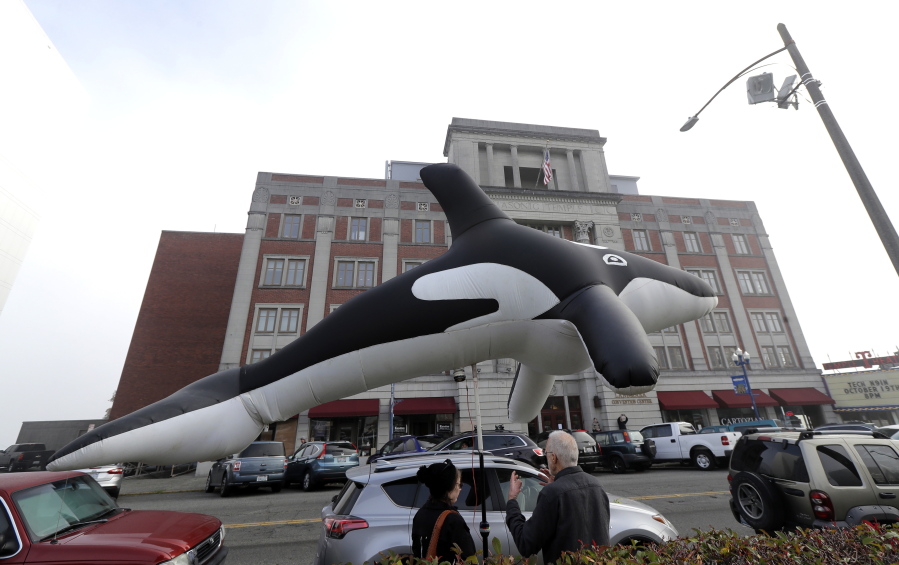TACOMA — Calls to breach four hydroelectric dams in Washington have grown louder in recent months as the plight of critically endangered Northwest orcas has captured global attention.
Some argue the best way to get more salmon to the starving whales is to tear down four dams on the Lower Snake River, a tributary of the Columbia River, to help migrating fish.
But federal agencies and others have pushed back, saying the dams provide benefits to the region in low-cost hydropower, navigation and recreation.
Breaching the dams has long been contentious, but it’s gained renewed attention as the orcas have hit the lowest numbers in more than three decades. The whales struggle from pollution, boat noise and lack of chinook salmon, which have been declining because of dams, habitat loss and overfishing. Just 74 animals remain in the small group.
A task force called by Gov. Jay Inslee is prioritizing a list of potential solutions to address those three threats. At a meeting Thursday, there was little consensus on whether the group should recommend that the governor convene stakeholders to discuss issues related to possible future removal of the dams.
Ken Balcomb, a scientist with the Center for Whale Research, who supports dam breaching, told the group that punting the issue won’t help orcas. “They’re reaching the bottom of their barrel,” he said. “We have to move the ball forward. The time is now.”
A number of whale and fisheries scientists have urged the task force to recommend breaching the dams and spilling more water over Columbia and Snake river dams to help salmon. Many who have commented have also supported the idea.
But dam supporters say the structures provide carbon-free electricity and support barging on the Snake River that moves millions of tons of cargo.
“The dams along that river are the lifeblood of those communities,” said Tom Davis, government relations director with the Washington Farm Bureau. He called the talk of dams “a distraction” that continues to divide the state.
Some say dam removal could be part of a long-term solution but note that more immediate actions could boost salmon, such as removing smaller dams or increasing habitat protections.
“Everything has to be on the table,” said state Sen. Kevin Ranker, an Orcas Island Democrat who supports dam removal but said more discussions would need to take place. Meanwhile, he said the state can move quickly on other actions, including creating a “no-go zone” that restricts vessels around feeding whales.
Other ideas weighed by the group include reducing boat noise; creating a permit system for commercial whale watching trips; protecting habitat for chinook salmon and the smaller forage fish they eat; and spilling more water over Columbia and Snake river dams.



